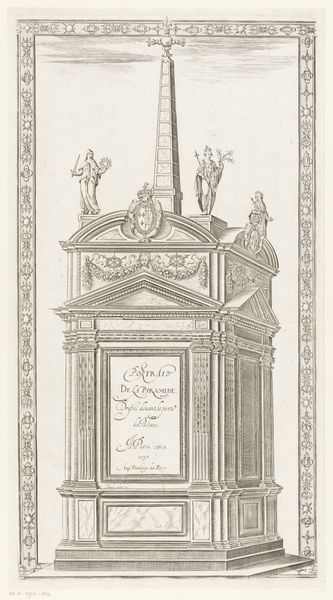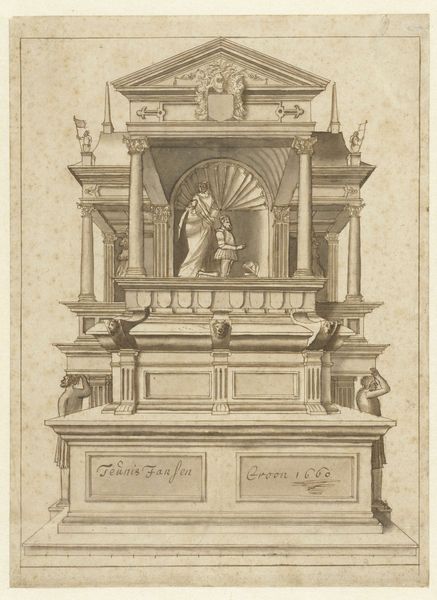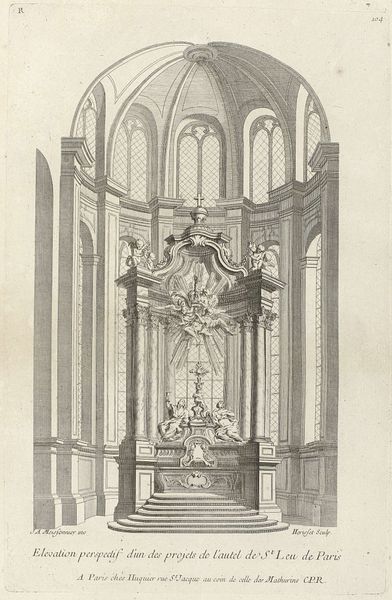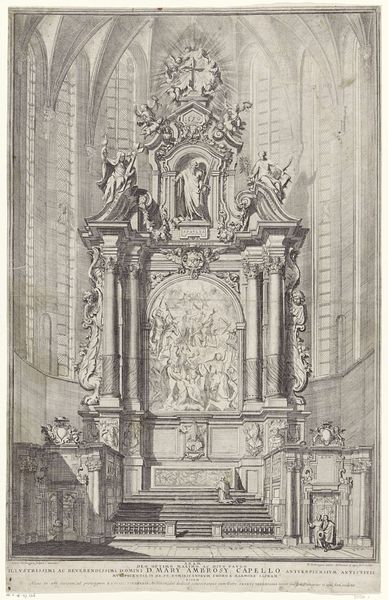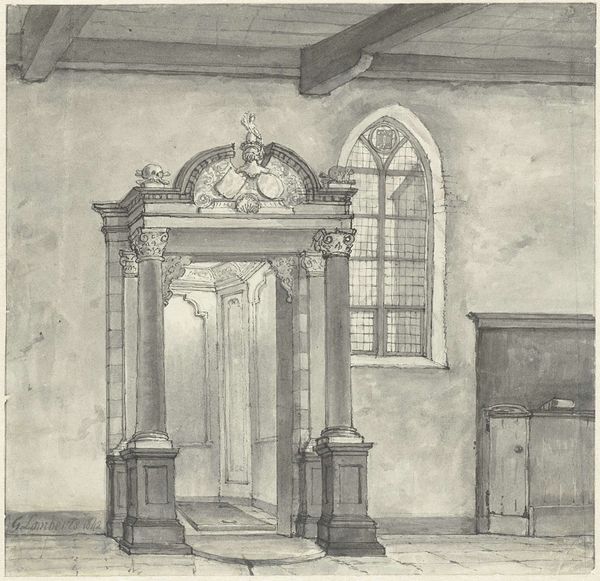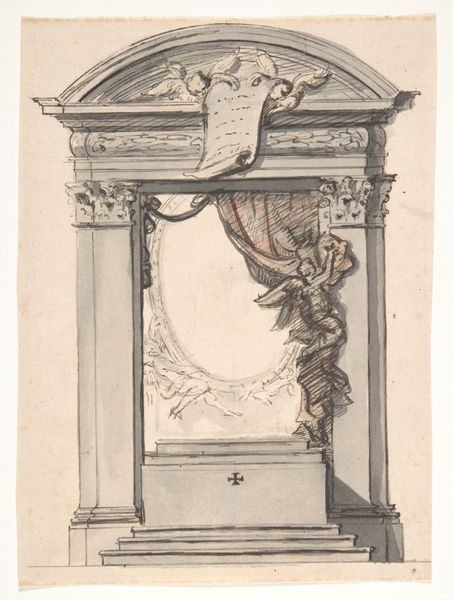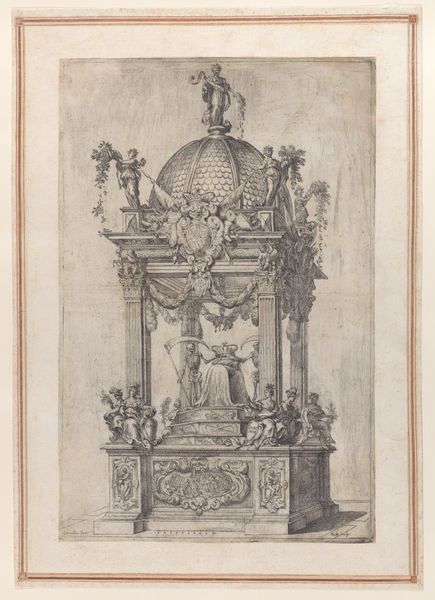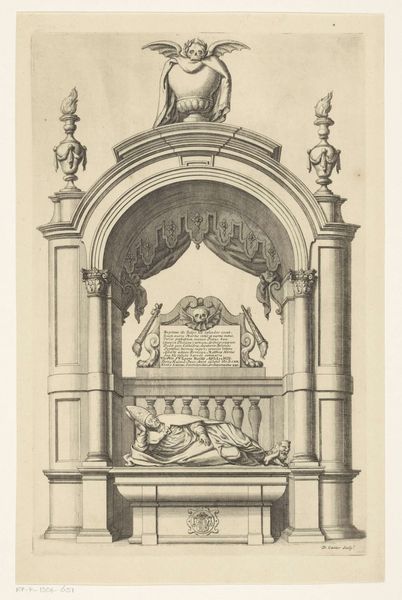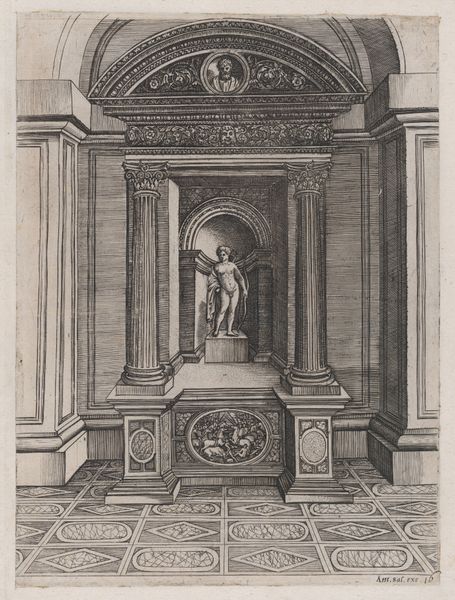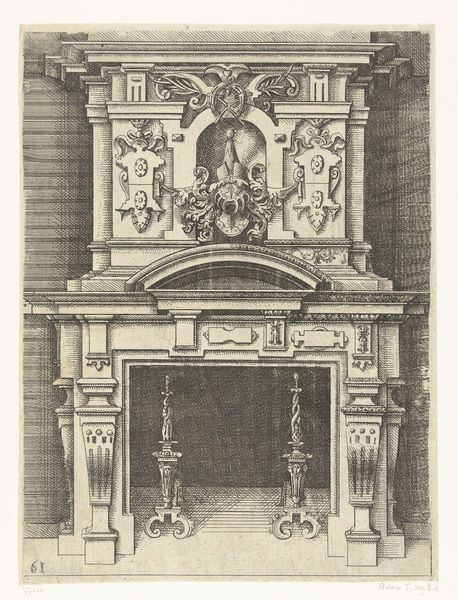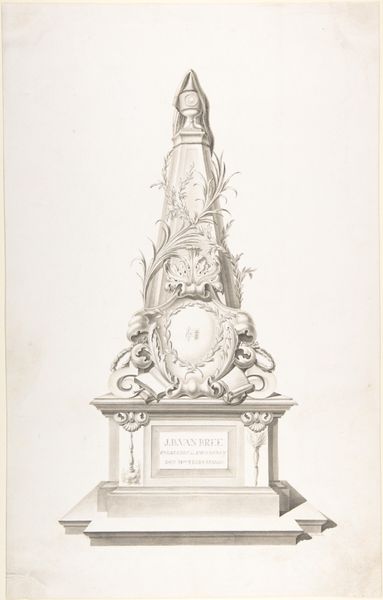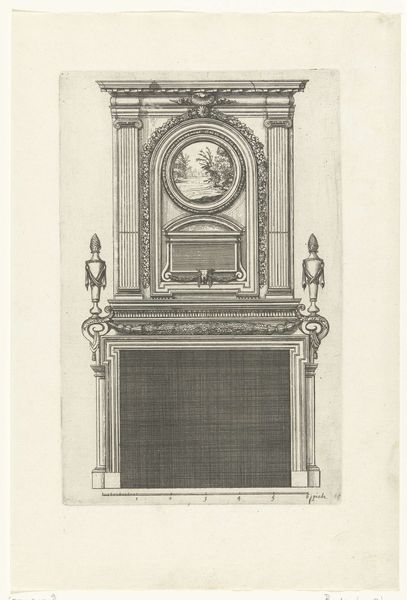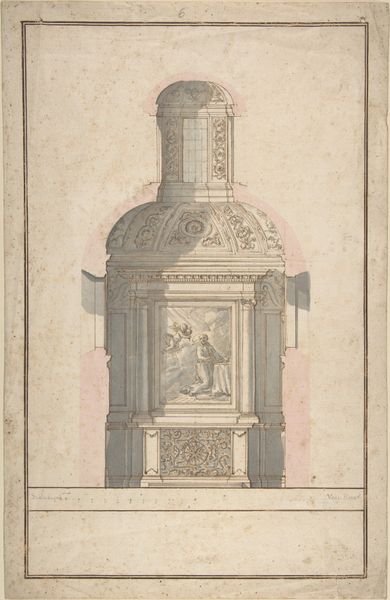
Grafstede van Adriaen Pauw in Nederlands Hervormde Kerk te Heemstede 1840 - 1848
0:00
0:00
drawing, watercolor
#
drawing
#
neoclacissism
#
landscape
#
watercolor
#
watercolour illustration
#
academic-art
Dimensions: height 273 mm, width 193 mm
Copyright: Rijks Museum: Open Domain
Curator: This watercolour drawing by Gerrit Lamberts captures the tomb of Adriaen Pauw inside the Dutch Reformed Church in Heemstede. It was created sometime between 1840 and 1848 and is now housed in the Rijksmuseum. Editor: The piece gives an almost mournful first impression; it feels contained by a tight neoclassical frame but also, ironically, softened through the watery greys and whites of the medium. Curator: Indeed. Lamberts masterfully utilizes the transparency of watercolor to capture the somber ambiance of the church interior. Note how the light filters through the window, casting gentle shadows and accentuating the monumentality of the tomb. Editor: The composition seems particularly focused on that play of light and shadow. How would you interpret the strategic absence of bold colours here? Curator: It serves, perhaps, to emphasize the drawing’s structural form. Observe the clean lines of the architecture, typical of Neoclassicism, providing a clear articulation of space and a focus on the idealized shape of the memorial. Editor: From a historical standpoint, I see the rendering not just as a visual document of the tomb, but as a record of changing tastes, particularly when we acknowledge how Dutch Reformed churches presented civic identities in that time period. It subtly communicates a shift from overt displays of power towards more subdued expressions of remembrance. Curator: It's true; we should see the drawing itself as participating in this historical context. It captures not just a monument, but also the evolving sentiment and political landscape of the 19th century Netherlands. Editor: Precisely! And thinking about its later museum setting, the artwork’s life continues, transforming it into an artifact illustrating changes in commemorative traditions. Curator: Fascinating—viewing how its formal qualities continue speaking about history as well. I suppose both history and form create this lasting dialogue that continues long after its creation. Editor: Exactly! Exploring art from multiple angles can yield richer meanings, bridging gaps between aesthetic appreciation and a deeper historical awareness.
Comments
No comments
Be the first to comment and join the conversation on the ultimate creative platform.
